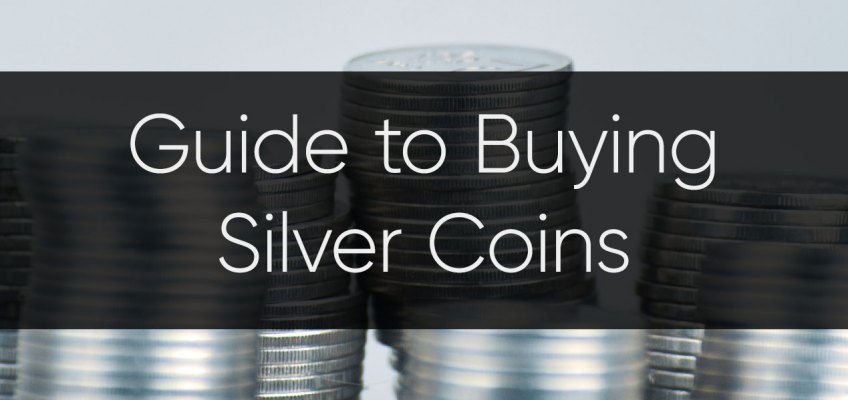Investing in precious metals is a common strategy used to diversify a portfolio and hedge against downturns in other markets, like stocks and bonds.
Some analysts and firms, like JP Morgan, believe we’re heading into a commodity “supercycle” which will be bullish for metals, especially precious metals.
Often, when stock prices drop during recessions, precious metals like gold or silver rise in price. This attracts investing and speculative trading.
Some may try to make short-term bets on the market in order to gain from market volatility. Or they may hold gold or silver long-term, which is far less riskier.
The good news is any investor can benefit from having a portion of their investment in these commodities.
Introduction to Silver
In addition to diversifying a portfolio and hedging against stock market drops, silver has other uses.
- Silver is cheap enough that almost everybody can afford some.
- Silver markets are liquid and the metal can be bought and sold easily via financial exchanges or from bullion dealers worldwide.
- Silver has many industrial and medical uses, and up to 50% of production is used for these applications.
- Historically silver has been used as currency and some U.S. states recognize it as legal tender.
- Unlike cryptocurrencies, silver coins can’t be hacked or erased as with digital assets.
Investing in Silver
Two of the most cost-effective ways to invest in silver are to:
- Buy shares in a fund that is 100% backed by bullion, like the Sprott Physical Silver Trust (PSLV)
- Or buy physical silver through a service like BullionVault.com, which will store it for you.
Buying silver coins is perhaps one of the costliest ways to acquire silver because you will pay a “premium” on every coin. (You can think of the premium as a retail mark-up.)
Nevertheless, there are many silver buffs who want to have their silver “in hand.” So let’s find out how to buy silver coins.
Government-Minted Silver Coins
Government-minted silver coins are quite popular. They are sold to coin collectors and silver investors. And they are easy to buy, sell, and store.
They are named after their designs. Some of the best-known government-minted silver coins include:
- American Eagles
- Canadian Maple Leafs
- Austrian Philharmonics
- Mexican Libertads
- Royal Mint Britannias
Silver Coins Versus Silver Rounds
Government-minted coins display a denomination on them. They are legal tender, and fake coins are prosecuted under counterfeiting laws. The weight and purity of the coins are backed by the issuing government.
Silver “rounds” are produced by private mints. They have the following characteristics:
- Not issued by a government
- Available in “fractional” denominations, most commonly, one-half ounce, one-quarter ounce and one-tenth ounce weights.
- Weight and purity backed by the dealer
- Cheaper than government-minted coins.
Silver Coins Versus Silver Bars
A silver bar is an ingot with the purity and weight stamped on it. Silver bars can be issued by a government mint or private mint. Silver bars may cost less than silver coins because often they feature designs that are not as intricate as coins.
Typically, the larger the size of the bar (in ounces) the lower the premium will be (as a percentage of each ounce contained in the bar). Common sizes of retail silver bars include 100 ounces, 10 ounces, and 1-ounce.
A segment of the population that believes some Western countries may be subject in the future to hyperinflation, commonly prefer coins, in the expectation that they will use them as currency in an economic collapse.
Understanding Silver Prices
Silver is traded on regulated commodities exchanges like COMEX and the London Metals Exchange. That trading activity creates the “spot price” which is the current price of one Troy ounce of silver.
If you buy silver coins (or bars) you’ll pay the spot price plus a “premium” or markup.
The markup fluctuates over time and is currently ranging from approximately 30% on up for a one-ounce coin. Some dealers will display the premium but be aware that the price displayed may be only for those buying a certain volume or paying by check (the latter can sometimes get you a discount).
How to Purchase Silver Wisely
When purchasing silver, keep in mind these tips:
Don’t overpay for silver. Know the current price of silver. Try to pay as close to the spot price as possible. This can be done via funds like the Sprott Physical Silver Trust (NYSE: PSLV) or via services like BullionVault.com.
Realize that the Sprott Physical Silver Trust (PSLV) may present tax advantages to U.S. citizens, as it is a foreign (Canadian) closed-end fund taxed at long-term capital gains rates. By contrast, all physical coins and bars, and many ETFs, are taxed as “collectibles” under IRS law, with a maximum rate of 28%.
Start out small. If you want to purchase coins, buy a few silver coins each payday. This is called dollar-cost averaging and helps to avoid buying a lot of silver on a day it hits its peak.
As you accumulate more silver coins, have a secure place to store them that is easily accessible.
Only buy from the most reputable dealers. This eliminates the chance of buying fake silver coins or coins that are low in silver content.
Summary
Silver is sometimes used to hedge stock market drops, and can be used as currency.
When buying silver coins, buy the most popular government-minted coins. Always buy from a reputable dealer and know the spot price of silver before you buy coins. Shop around so you don’t overpay.
